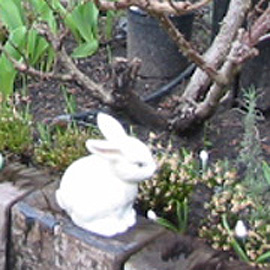Giotto in Amsterdam
The cycle of frescoes in the Arena chapel in Padua

From 1303 to 1305 Giotto painted from floor to ceiling the Cappella degli Scrovegni, also known as the Arena Chapel, in the Italian town of Padua. The frescoes, beautifully restored in 2002, are reckoned to be his most famous work. A scale model of the chapel with photographic reproductions of the entire cycle of frescoes is to be seen in the Amsterdam Biblical Museum this winter.
The 14th century was Padua’s Golden Age, especially in the field of figurative art. In 1300 the rich merchant Enrico Scrovegni bought the ruins of the old Roman arena in Padua and the land belonging to it. He had a church built there. When it was finished in 1303, he commissioned Giotto to paint frescoes on the walls. When the painting was finished in 1305, a masterpiece had been born. The chapel is decorated with scenes from the life of the Virgin Mary, from the life and sufferings of Jesus and with representations of the seven virtues and the seven deadly sins. These three cycles cover the side walls. The Last Judgement is a separate painting covering the wall above the entrance. The vault of the chapel is painted as an intensely blue sky sprinkled with stars. The perspective, the use of colour and the composition are all a delight to the eye.
Giotto di Bondone, usually simply known as Giotto 1267, was an Italian artist who lived from c. 1267 to 1337. His work is seen as an enormous breakthrough. He is regarded as the father of modern painting schilderkunst because of his introduction of a number of innovations. Where human figures previously were painted ‘flat’ and without expression, he succeeded in picturing people in a natural way and in expressing human emotions. His use of perspective, intense colours and well-planned composition gave a new dimension to the art of painting. The cycle of frescoes in the Arena Chapel is seen as his finest work.
The heart of the presentation is a model of the Arena Chapel on a scale of 1:4. Because of the model’s size, the visitor is brought literally eye-to-eye with the frescoes – thought these are no more than copies. The model stands in the 17th-century Jacob de Wit Room. The introduction film, with which the visit starts in Padua, is shown here. In addition there is a documentary part in which audiovisual information is given on the origins of the chapel and the cycle of frescoes, the town of Padua around the year 1300 and the radical restoration of the chapel and the frescoes between 2000 and 2002. The chapel had fallen into disuse mainly in the 20th century. Following the successful restoration the true colours were again brought to light and it can be said that despite its age of 700 years, the Arena Chapel houses a very well-preserved and magnificent masterpiece.
Alles Neue macht der Mai

Wenn du faszinierende neue Freunde kennen lernen möchtest, empfehlen wir das Frühstückstreff Social Network.
Du wirst vielleicht staunen, was die Redaktion von ostern-international.de zum Preis von Null Euro für Zehntausende Menschen in Europa tut. Frühstücken wir bald gemeinsam? Folge uns auf fruehstueckstreff.de – Anzeige ...
Öffnungszeiten:
23.01. – 02.03.2008
Standort:
Bijbels Museum Diese Seite bearbeitenTourist-Information:
Amsterdam Tourist OfficePostbus 3901
1001 Amsterdam
0900-400 40 40 fon
(0 20) 6 25 28 69 fax
www.amsterdamtourist.nl
Veranstalter:
Bijbels MuseumHerengracht 366-368
1001 Amsterdam
020 624 24 36 fon
020 624 83 55 fax
www.bijbelsmuseum.nl